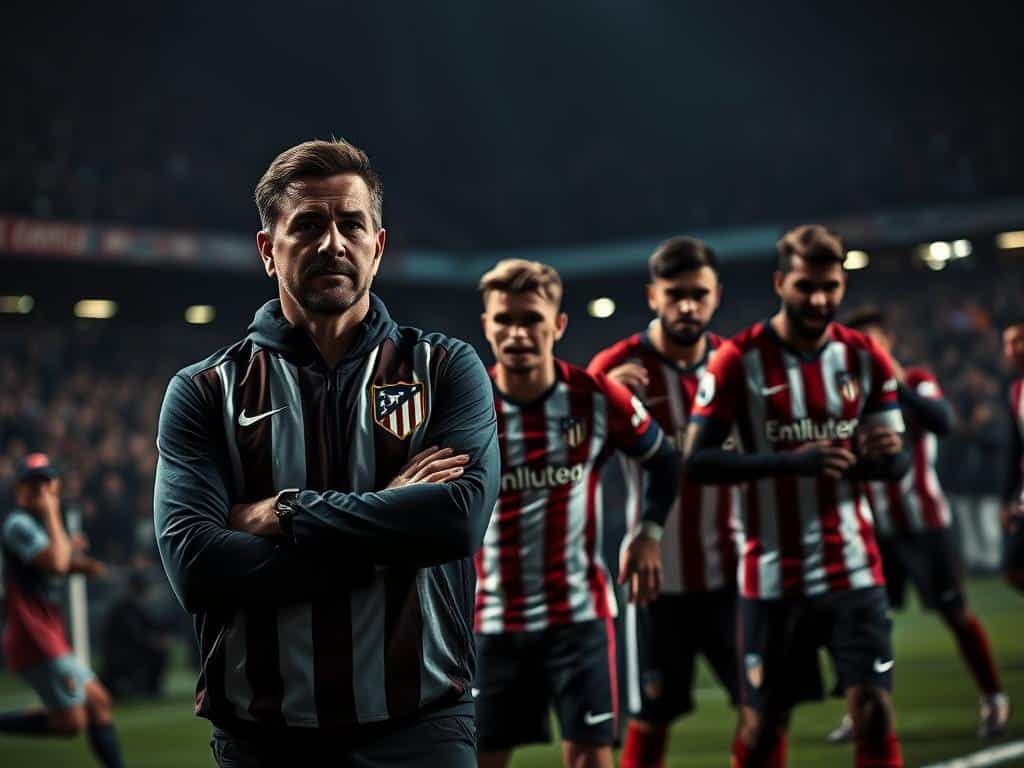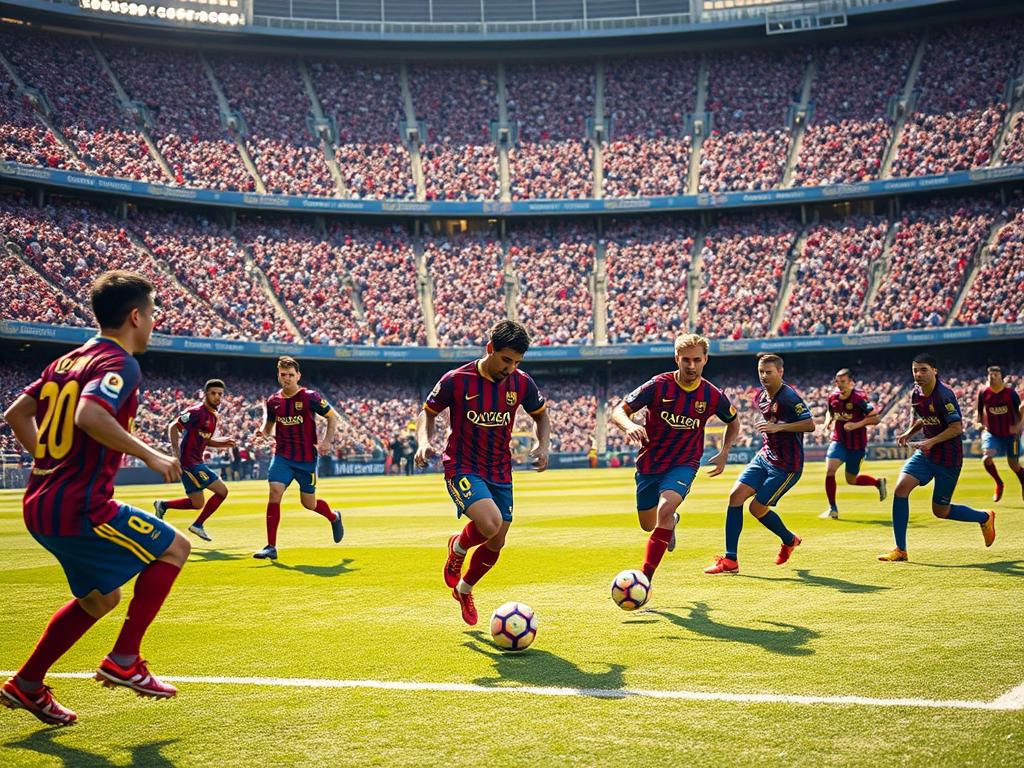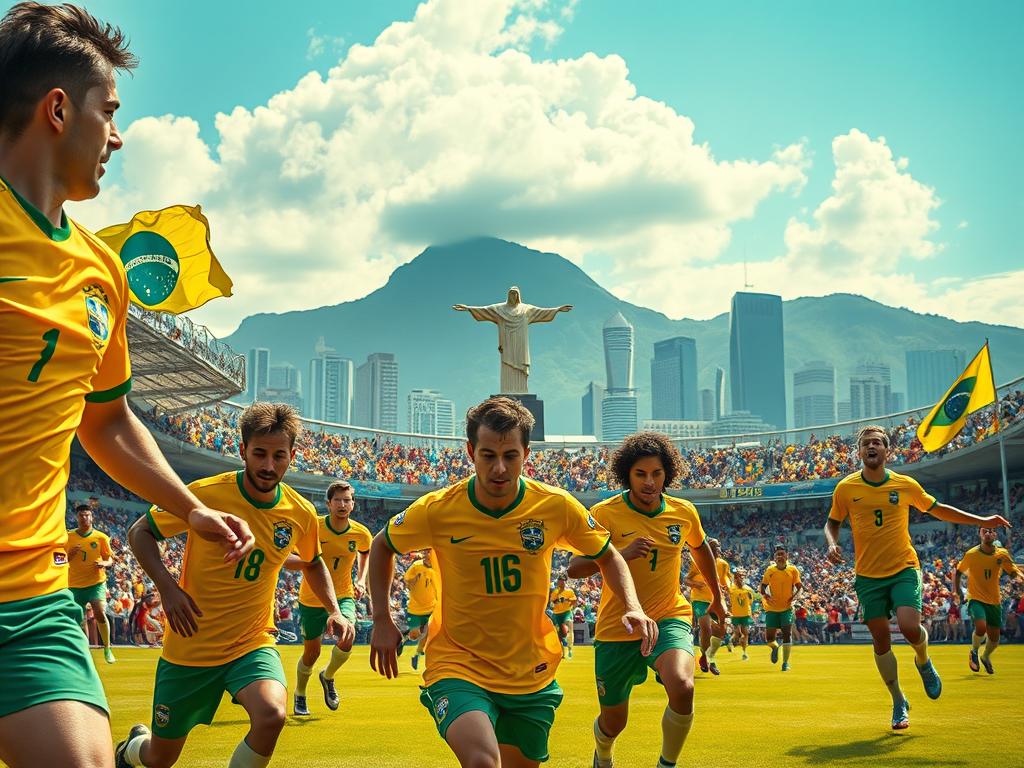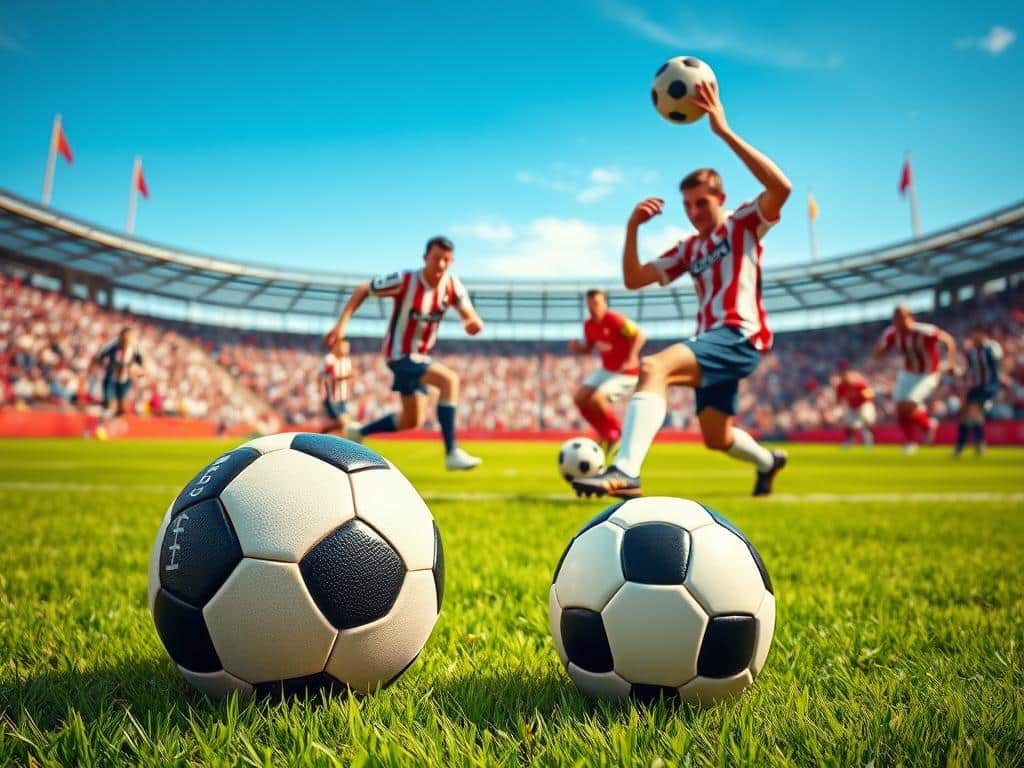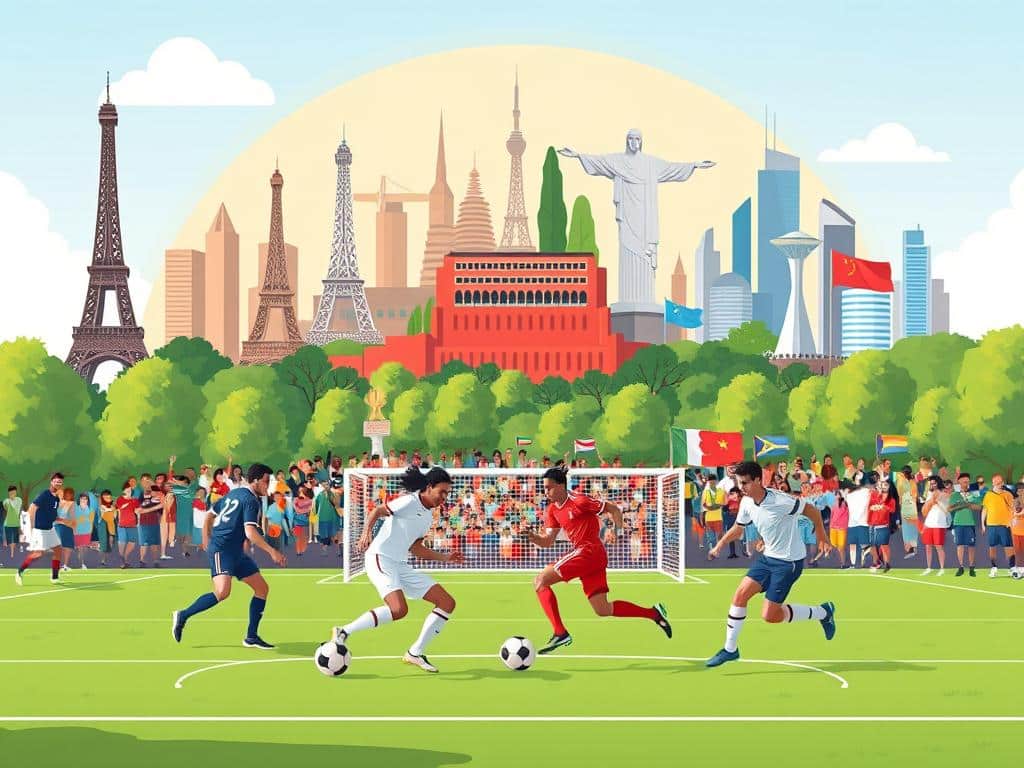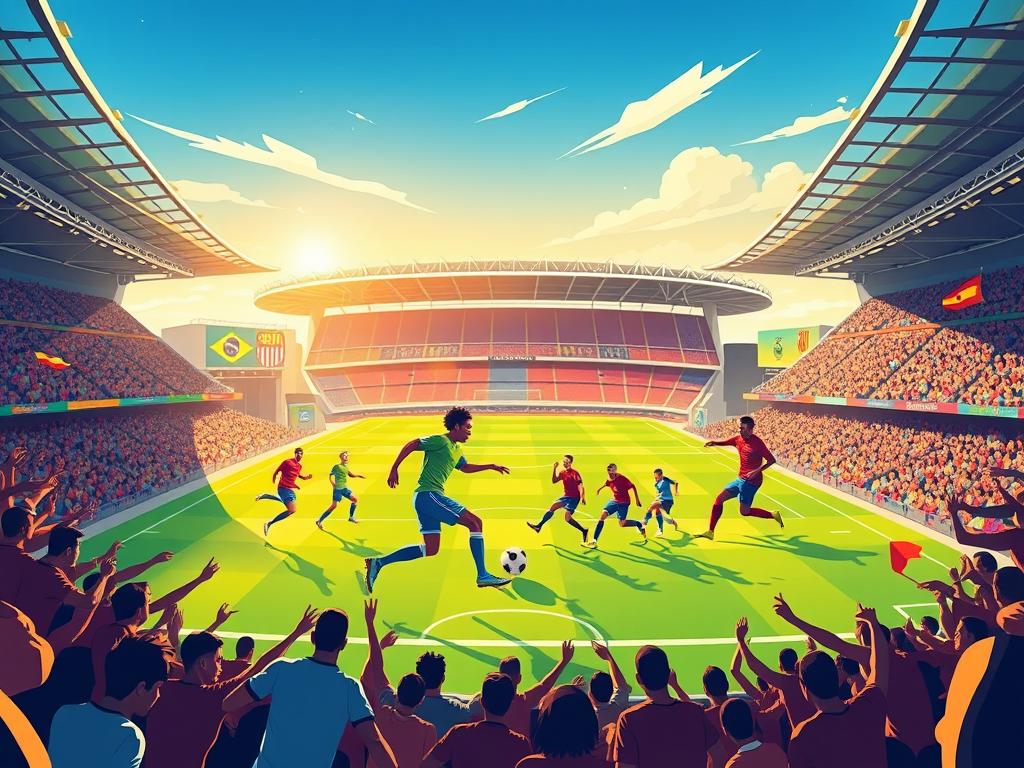Twelve years ago, a struggling Spanish club took a bold step that changed football history. Hiring Diego Simeone transformed Atletico Madrid from mid-table mediocrity into La Liga giants. Today, they stand tall alongside Barcelona and Real Madrid, defying the odds with grit and tactical brilliance.
Before 2011, the team hadn’t finished in Spain’s top three for 15 straight seasons. Now? Eleven top-three finishes in twelve campaigns tell an incredible story. Financial power grew from €5m transfers to €185m spending ability, mirroring their on-field success.
This is more than a football fairytale – it’s a blueprint for club building. Simeone crafted a winning identity through defensive discipline and counterattacking flair. His tenure proves what’s possible when vision meets relentless execution.
The Simeone Revolution: Rescuing Atletico Madrid from Obscurity
The winter of 2011 marked rock bottom for a once-proud club, but redemption was closer than anyone imagined. When Simeone took charge, the team languished in 10th place, fresh from a humiliating Copa del Rey exit to third-tier Albacete. Fans demanded change—and got a miracle worker.
December 2011: A Club in Crisis
Disillusionment hung heavy at the Vicente Calderón. The squad lacked identity, and results mirrored the chaos. But within months, Simeone’s relentless energy sparked an overnight transformation. Existing players like Godín and Gabi became pillars, while a young Koke emerged as the heartbeat.
Immediate Turnaround: Europa League Glory and Copa del Rey
The 2012 Europa League triumph announced the revival. Radamel Falcao’s 12-goal campaign, capped by a brace in the final, turned doubters into believers. Just a year later, the 2013 Copa del Rey final delivered a symbolic blow—beating Real Madrid at the Bernabéu. Fans still chant about that night.
Smart moves fueled the rise. A €1m Diego Costa purchase became a €38m profit. Thibaut Courtois’ loan spell solidified the defense. From Segunda struggles to European glory, this was more than a comeback—it was a revolution.
Building a Tactical Identity: The 4-4-2 That Shook Europe
Tactical genius isn’t always flashy—sometimes, it’s a rock-solid 4-4-2 that changes everything. Simeone’s hybrid system blended defensive discipline with lethal counters. Opponents called it “chess with cleats,” as every move was calculated to suffocate and strike.
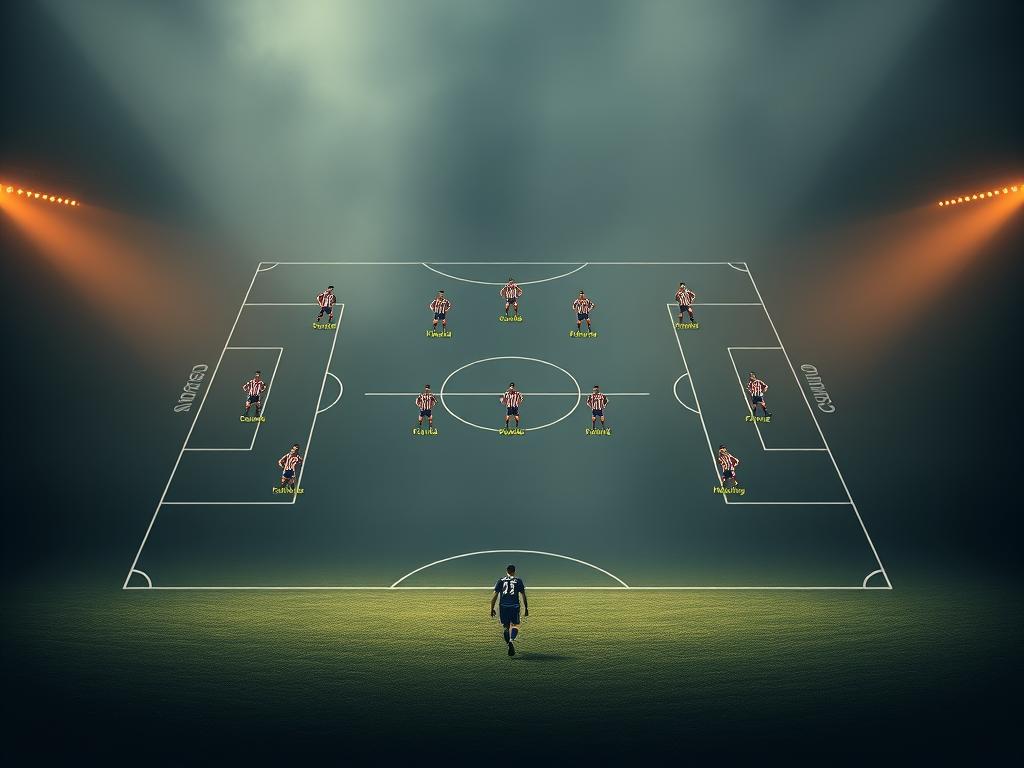
Defensive Solidity and Counterattacking Mastery
The secret? A midfield libero—often Gabi—who shielded the backline while triggering attacks. Wingers like Koke tucked inside, creating a compact shape. Filipe Luis’ overlapping runs added width, turning defense into offense in seconds.
Heatmaps showed a near-impenetrable block. “Like trying to break through a brick wall,” groaned one rival coach. Set pieces were nightmares for the opposition, with five defenders crowding the box during corners.
Key Players: Godín, Gabi, and Costa’s Transformative Roles
Diego Costa’s acceleration and physique made him unplayable. His €1m signing became a €38m profit, symbolizing Atleti’s smart recruitment. Gabi, bought for €3m, dictated play for seven seasons—proof that heart trumps price tags.
Then there was Godín. His 93rd-minute goal against Barcelona sealed the 2014 title, a moment etched in history. Together, these players turned a side into giants, toppling Real Madrid and Barcelona with sheer will.
2013/14: The Unthinkable La Liga Triumph
The 2013/14 season rewrote Spanish football history in ways no one saw coming. With a 90-point campaign and a +51 goal difference, the team shattered the Barcelona-Real Madrid duopoly. Every match felt like a statement—especially the 18-game unbeaten streak that fueled their rise.
Breaking the Barcelona-Real Madrid Duopoly
The Camp Nou finale was pure drama. Diego Godín’s towering header secured a 1-1 draw—and the title. Fans erupted as Thibaut Courtois celebrated his 20th clean sheet. This wasn’t luck; it was a league won with grit.
Financial disparities made it sweeter. While rivals spent billions, the club’s €35m net spend highlighted their savvy. Messi and Ronaldo earned more than the entire squad, yet teamwork trumped star power.
The Champions League Heartbreak in Lisbon
Four weeks later, Lisbon’s final brought agony. Sergio Ramos’ 93rd-minute equalizer forced extra time, and a 4-1 collapse followed. “It still haunts us,” admits one fan. But the champions league run—beating Milan, Barcelona, and Chelsea—proved their world-class grit.
Simeone’s touchline passion mirrored the fans’ belief. From the pitch to the stands, this was a season that redefined what underdogs could achieve.
Atletico Madrid Under Diego Simeone: European Near-Misses
Heartbreak struck again in Milan as the club came within inches of European glory. The 2016 Champions League final was a mirror of their 2014 agony—dominating large stretches but falling short in the cruelest way. Yannick Carrasco’s 79th-minute equalizer forced extra time, but penalties decided their fate.
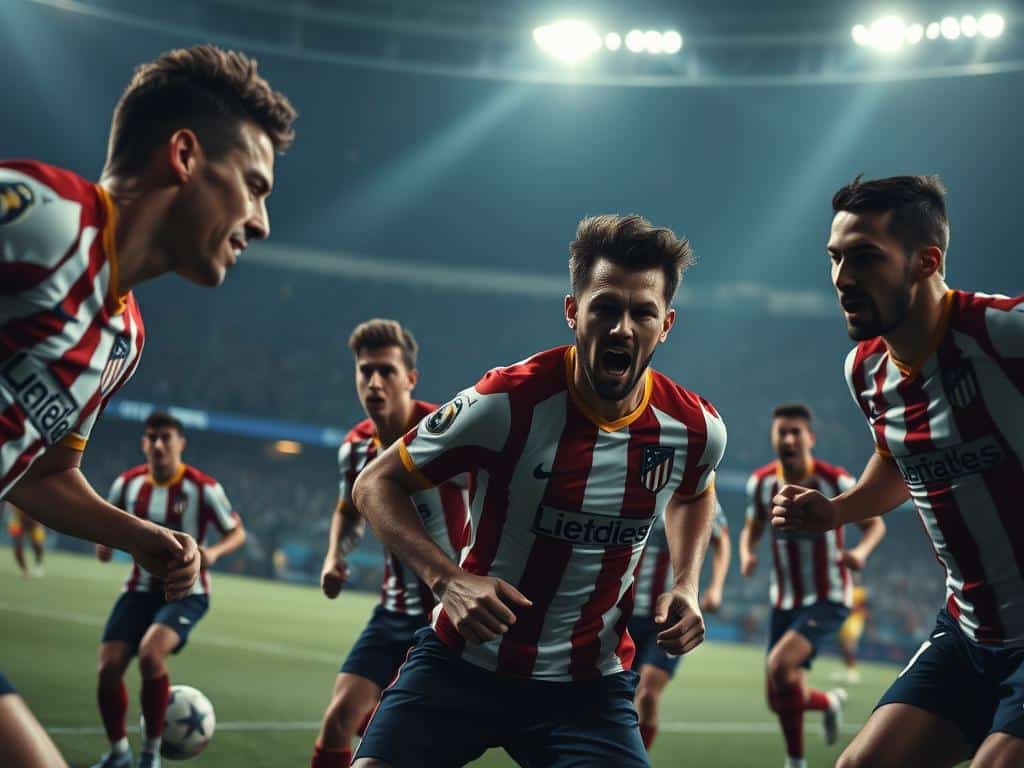
2016 UCL Final: Penalty Agony Against Real Madrid
Juanfran’s missed spot-kick in the shootout sealed a 5-3 loss to Real Madrid. Fans watched in silence as their captain collapsed to his knees, apologizing to the traveling supporters. Simeone nearly resigned afterward, calling it “a wound that never fully heals.”
The team had outplayed their rivals for much of the game. Yet, like 2014, the trophy slipped away. Psychologically, losing to their city rivals twice in three years left scars. But it also fueled their evolution.
Simeone’s Tactical Evolution in Continental Competition
Post-2016, the coach adapted. The rigid 4-4-2 gave way to a flexible 4-1-4-1 in Europe. Saúl Ñíguez’s box-to-box energy became pivotal, while Antoine Griezmann emerged as the new attacking focal point.
Heatmaps showed wider defensive shapes, absorbing pressure before springing counters. The 2018 Europa League triumph offered consolation, but the ability to compete with Europe’s elite remained undeniable. For fans, these near-misses weren’t failures—they were proof of how far the club had come.
Financial Growth and Smart Recruitment
Smart spending and youth development became the backbone of a football revolution. The club’s rise from €5m transfers to €185m investments mirrors its on-field success. Every dollar was stretched to build a side that could compete with giants.
From €5m Transfers to €185m Spending Power
Early years relied on bargains. Diego Costa’s €1m signing flipped for €38m. Radamel Falcao’s sale funded Antoine Griezmann’s arrival—a €120m reinvestment.
The strategy? Sell high to improve. Lucas Hernández’s €80m exit to Bayern funded key upgrades. Scouts mined Segunda divisions for gems like Koke, who cost nothing.
- 2023 summer: €185m splurge (Álvarez, Sorloth, Gallagher)
- Commercial deals: Plus500 and Hyundai boosted budgets
- Metropolitano: Stadium revenue doubled matchday income
Academy Success: Koke and the Homegrown Core
Koke’s 600+ games prove loyalty pays. The midfield maestro replaced legends like Gabi and Torres. His leadership turned the result of tight games.
Jan Oblak’s €16m deal was another steal. The goalkeeper became a wall, proving smart buys don’t need huge price tags.
This season, the blend of academy stars and savvy signings keeps the dream alive. From the copa del Rey to Europe, the blueprint works.
The Legacy: Establishing a “Big Three” in Spain
Spanish football’s landscape shifted forever as a new powerhouse emerged. For 12 straight years, the club has cemented itself alongside Real Madrid Barcelona—a feat once thought impossible.
Longevity in La Liga’s Top Three
Eleven top-three finishes in twelve seasons rewrote history. Unlike Valencia or Deportivo’s short-lived challenges, this consistency changed perceptions. “Third isn’t failure anymore—it’s expectation,” admits a longtime fan.
The 2021 title proved their staying power. Luis Suárez’s 21 goals sealed the deal, showing they could still topple giants. Stats tell the story:
- 63% win rate at Metropolitano vs 58% at Calderón
- 55,000+ season tickets sold—a record
- +51 goal difference in 2013/14 (still a benchmark)
The Metropolitano Era: A New Home and Identity
Since 2017, the 68,456-seat stadium became a fortress. Matchday revenue doubled, funding bigger transfers. Yet the soul remained—Simeone’s statue outside honors the architect.
Fans traded Calderón’s working-class grit for modern comforts, but passion stayed. The team’s success here silenced city rivals. Unlike Bernabéu’s grandeur, the Metropolitano roars with collective belief.
This is more than a stadium—it’s proof a league can have three kings. And for this club, the throne isn’t borrowed—it’s earned.
Simeone’s Atletico: A Blueprint for Defying the Odds
What happens when a club bets everything on one visionary? Eight trophies, €1.2bn in revenue growth, and a football revolution. This isn’t just a story—it’s a playbook for beating the odds.
From mid-table struggles to Champions League finals, the transformation proves smart coaching trumps big budgets. The secret? A mix of tactical flexibility, player development, and relentless belief. Mid-tier teams worldwide now study this model.
Could Álvaro Morata mirror Diego Costa’s impact? Will the Metropolitano roar louder in coming years? One thing’s clear: in a game dominated by giants, this success story redefines what’s possible.
Visit the stadium. Feel the energy. This is how underdogs become standard-bearers.

